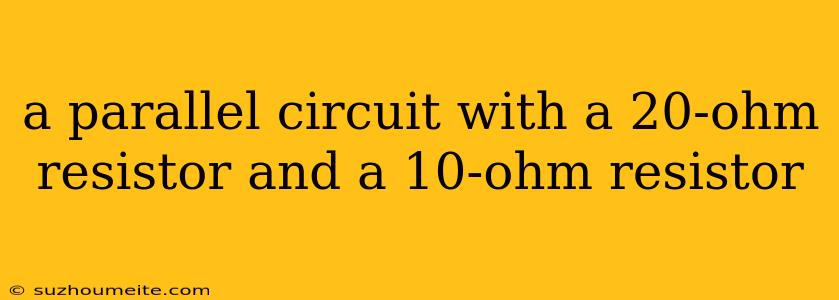A Parallel Circuit with a 20-ohm Resistor and a 10-ohm Resistor
A parallel circuit is a circuit where the components are connected across each other, providing multiple paths for current to flow. In this scenario, we have a 20-ohm resistor and a 10-ohm resistor connected in parallel.
Understanding Parallel Circuits
- Current: In a parallel circuit, the current divides between the different paths. The amount of current flowing through each path is inversely proportional to the resistance of that path. This means the path with lower resistance will have a higher current flowing through it.
- Voltage: The voltage across each component in a parallel circuit is the same. This is because all components are connected directly to the same voltage source.
- Resistance: The total resistance in a parallel circuit is always less than the smallest individual resistance. This is because the current has multiple paths to flow, effectively reducing the overall resistance of the circuit.
Calculating Equivalent Resistance
To calculate the equivalent resistance (R<sub>eq</sub>) of a parallel circuit, we use the following formula:
1/R<sub>eq</sub> = 1/R<sub>1</sub> + 1/R<sub>2</sub> + ... + 1/R<sub>n</sub>
Where:
- R<sub>eq</sub> is the equivalent resistance
- R<sub>1</sub>, R<sub>2</sub>, ..., R<sub>n</sub> are the individual resistances of each component
In our case, we have:
1/R<sub>eq</sub> = 1/20 ohms + 1/10 ohms
1/R<sub>eq</sub> = 3/20 ohms
R<sub>eq</sub> = 20/3 ohms ≈ 6.67 ohms
Therefore, the equivalent resistance of the circuit is approximately 6.67 ohms.
Conclusion
The parallel connection of a 20-ohm resistor and a 10-ohm resistor results in an equivalent resistance of approximately 6.67 ohms. This demonstrates the key properties of parallel circuits, where current divides, voltage remains constant across components, and the total resistance is lower than the smallest individual resistance.
